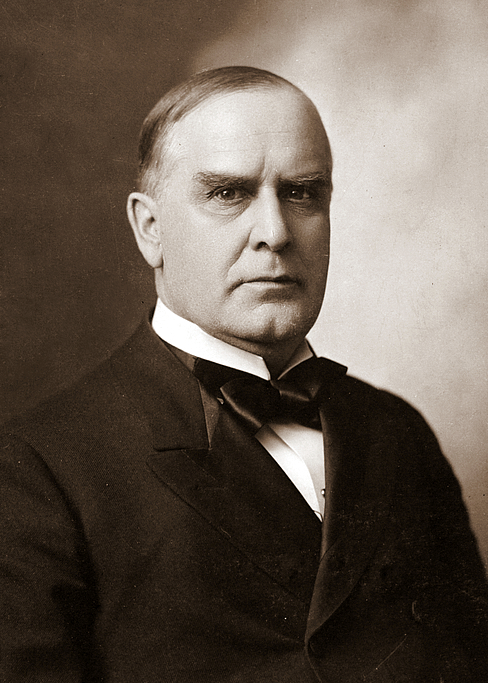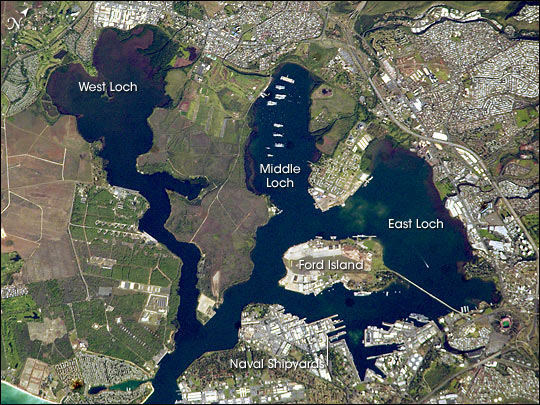 On May 4, 1898, Congressman Francis Newlands submitted a joint resolution for the annexing of the Hawaiian Islands to the U.S. House Committee on Foreign Affairs after Commodore Dewey defeated the Spanish fleet at Manila Bay, Philippines, on May 1. On May 17, the joint resolution was reported out of the committee without amendment and headed to the floor of the House of Representatives. The joint resolution’s accompanying Report justified the congressional action to seize the Hawaiian Islands as a matter of military interest. The Report stated,
On May 4, 1898, Congressman Francis Newlands submitted a joint resolution for the annexing of the Hawaiian Islands to the U.S. House Committee on Foreign Affairs after Commodore Dewey defeated the Spanish fleet at Manila Bay, Philippines, on May 1. On May 17, the joint resolution was reported out of the committee without amendment and headed to the floor of the House of Representatives. The joint resolution’s accompanying Report justified the congressional action to seize the Hawaiian Islands as a matter of military interest. The Report stated,
“The leading nations—England, France, Germany, Japan, Spain, and the United States—have each a Pacific Squadron. Every one of these squadrons is stronger than ours save that of Spain, which is the weakest. Had the war in which we are now engaged been with any of the other powers they might have worsted our fleet and seized the Hawaiian Islands, which are not now defended by any fortification or cannon, thus exactly reversing our recent good fortune at Manila. They would then have had a convenient base for supplies, coal, and repairs, from which to actively harry and devastate our coast. But were we in complete possession of the Hawaiian Islands and they properly prepared for defense (which eminent officers of the Army and Navy stated to the committee could be done at a cost of $500,000), our fleet, even if pressed by a greatly superior sea power, would have an impregnable refuge at Pearl Harbor, backed by a friendly population and militia, with all the resources of the large city of Honolulu and a small but fruitful country. Holding this all important strategic point, the enemy could not remain in that part of the Pacific, thousands of miles from any base, without running out of coal sufficient to get back to their own possessions. The islands would secure both our fleet and our coast (House Committee on Foreign Affairs Report to accompany H. Res. 259, May 17, 1898, 2 (House Report no. 1355, 55th Congress, 2d session).”
 Despite objections by Senators and Representatives that foreign territory can only be acquired by treaty and not through a congressional statute, President McKinley signs the joint resolution into law on July 7, 1898, and the occupation of the Hawaiian Islands began on August 12. The war with Spain did not come to an end until April 11, 1899, after documents of ratifications of the Treaty of Paris were exchanged. Customary international law mandated the United States, as the occupying state, to establish a Military Government in order to provisionally administer the laws of the occupied state, being the laws of the Hawaiian Kingdom that stood prior to the regime change on January 17, 1893. Instead of establishing a Military Government, the U.S. authorities allowed the insurgents to maintain control until the Congress could reorganize the so-called Republic of Hawai‘i.
Despite objections by Senators and Representatives that foreign territory can only be acquired by treaty and not through a congressional statute, President McKinley signs the joint resolution into law on July 7, 1898, and the occupation of the Hawaiian Islands began on August 12. The war with Spain did not come to an end until April 11, 1899, after documents of ratifications of the Treaty of Paris were exchanged. Customary international law mandated the United States, as the occupying state, to establish a Military Government in order to provisionally administer the laws of the occupied state, being the laws of the Hawaiian Kingdom that stood prior to the regime change on January 17, 1893. Instead of establishing a Military Government, the U.S. authorities allowed the insurgents to maintain control until the Congress could reorganize the so-called Republic of Hawai‘i.

By statute, the U.S. Congress changed the name of the Republic of Hawai‘i to the Territory of Hawai‘i on April 30, 1900. The Territorial Act stated,
“The constitution and statute laws of the Republic of Hawaii then in force, set forth in a compilation made by Sidney M. Ballou under the authority of the legislature, and published in two volumes entitled ‘Civil Laws’ and ‘Penal Laws,’ respectively, and in the Session Laws of the Legislature for the session of eighteen hundred and ninety-eight, are referred to in this Act as ‘Civil Laws,’ ‘Penal Laws,’ and ‘Session Laws’ (31 U.S. Stat. 141).”
On March 18, 1959, the U.S. Congress again by statute changed the name of the Territory of Hawai‘i to the State of Hawai‘i. The Statehood Act stated,
“All Territorial laws in force in the Territory of Hawaii at the time of its admission into the Union shall continue in force in the State of Hawaii, except as modified or changed by this Act or by the constitution of the State, and shall be subject to repeal or amendment by the Legislature of the State of Hawaii (73 U.S. Stat. 4).”

When the United States created the Territory of Hawai‘i in 1900 it surpassed “its limits under international law through extraterritorial prescriptions emanating from its national institutions: the legislature, government, and courts (Eyal Benvenisti, The International Law of Occupation 19 (1993). The purpose of this extraterritorial prescription was to conceal the occupation of the Hawaiian Kingdom and bypass the duty of administering the laws of the occupied state in accordance with the 1899 Hague Convention, II, which the United States had ratified. Article 43, provides:
“The authority of the legitimate power having actually passed into the hands of the occupant, the latter shall take all steps in his power to re-establish and insure, as far as possible, public order and safety, while respecting, unless absolutely prevented, the laws in force in the country.”
The 1899 Hague Convention, II, was superseded by the 1907 Hague Convention, IV, and the text of Article 43 was slightly altered to read,
“The authority of the legitimate power having in fact passed into the hands of the occupant, the latter shall take all the measures in his power to restore, and ensure, as far as possible, public order and safety, while respecting, unless absolutely prevented, the laws in force in the country.”
The United States creation of the State of Hawai‘i in 1959, as the successor of the Territory of Hawai‘i, not only stood in direct violation of Article 43, but also the duty of non-intervention in the internal affairs of another state. This armed conflict has continued to date.


Their biggest struggle was getting around the internationally recognized neutrality status of the Hawaiian Kingdom. The U.S. fit their arguments to its agenda knowing full-well that the treaties held by those powers with the Hawaiian Kingdom and the neutrality status would prevent any nation from taking over the Hawaiian Kingdom lawfully. The only criminal was the United State of America whose arguments and concerns was vacuous. Their phobia of not gaining naval power domination in the Pacific was their motivation to commit international crimes and avoid the laws to progress with their One-World Order.
Instead of establishing a Military Government, the U.S. authorities allowed the insurgents to maintain control until the Congress could reorganize the so-called Republic of Hawai‘i.
Why then did the republic act and behave as a independent state buy seeking recognition from the others states of the world?
The Hawaiian Kingdom was an already recognized state. The republic had to maintain the illusion that there was no U.S. occupation that put them in power. To pull off the scam they had to act as if they were the lawfully elected gov’t of the Hawaiian state. It doesn’t matter if they acted on behalf of or got recognition by other states because no lawful rights can be gotten through a wrongful or illegal act. This is clearly demonstrated in the South African occupation of Namibia.
The South African Gov’t acted and behaved as the legitimate gov’t of Namibia for a long time. However, all acts done by the South African gov’t including all contracts with other states that had recognized them were made null and void once their scam was addressed.
What most people are ignorant of are the dynamics of that period of time and the mindset established. The Key for the U.S. belligerent occupation is the Turpie Resolution of 1894. Many overlook this important resolution and message sent out by the U.S. to its high officials and to the world nations to cover its international unlawfulness. The U.S. military presence in the Hawaiian Kingdom during its belligerent occupation along with its Turpie Resolution held back the world nations and Americans from interfering in the Hawaii situation.
The Turpie Resolution was passed on 31 May 1894 and included U.S. President Clevelands’s wishes that stated: “That of the right it belongs wholly to the people of the Hawaiiah Islands to establish and maintain their own form of government and domestic polity…” – Congressional Record, 53 Congress 2nd Session. page 5499.
The David Turpie Resolution terminates Cleveland’s efforts to restore the Queen as a direct result of the co-conspirator Morgan’s report. Congress had declared against any further intervention by the U.S. or any other nations or by their government officials against the Provisional Government of Hawaii despite the Queen’s protest for the U.S.A. to right the wrong created by its representatives.
Furthermore, the Turpie Resolution warned any intervention by other nations or any U.S. officials would be taken as an unfriendly act against the United States. The U.S. continues its belligerent occupation of the Hawaiian Kingdom today and continuously violates international customary laws and disregards the Hawaiian Kingdom’s international status as a neutral nation.
Aloha Tane, I agree, the Turpie Resolution played a big part in protecting the insurgents in order to maintain the illusion of being a real gov’t of the HK so they could carry out their plans of a fake annexation to the United States.
Yes. This was entirely orchestrated and planned by the U.S. Executive Branch in collusion with Thurston and his cronies who did their part to cover the U.S. plot headed by U.S. Secretary of State, James G. Blaine with the approval of U.S. President Harrison.